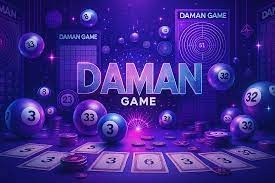
Daman Game: The New Craze Among Gamers
Daman Game: A Strategic Legacy of South Asia’s Gaming Culture 🎯
Daman Game is a traditional South Asian card game that blends strategy, skill, and cultural heritage. Played across India, Pakistan, and Bangladesh, it has evolved from a local pastime into a beloved social activity that continues to thrive in both rural and urban communities.
Daman Game: A Strategic Legacy of South Asia’s Gaming Culture 🎯
Daman Game is a traditional South Asian card game that blends strategy, skill, and cultural heritage. Played across India, Pakistan, and Bangladesh, it has evolved from a local pastime into a beloved social activity that continues to thrive in both rural and urban communities.
🕰️ Origins and Cultural Significance
The Daman Game traces its roots back centuries, believed to have originated in the Indian subcontinent as a form of entertainment during social gatherings and festivals. Historically, it was played using handmade cards or tokens, often crafted from paper, wood, or metal. The game’s name “Daman” is derived from regional dialects, and while its exact origin remains debated, its cultural impact is undeniable.
Daman was more than just a game—it was a social ritual. Families and friends would gather to play, share stories, and bond over rounds of strategic play. In many communities, it became a symbol of unity, leisure, and mental agility.
🃏 Gameplay and Rules
The Daman Game is typically played with a specialized deck of cards or tokens, depending on the regional variation. While rules may differ slightly across locations, the core gameplay revolves around strategic moves, bluffing, and calculated risks.
Basic structure of the game includes:
- Players: Usually 2 to 6 participants.
- Objective: To collect or eliminate specific card combinations or tokens.
- Turns: Players take turns drawing, discarding, or playing cards based on predefined rules.
- Winning: Victory is achieved by completing a set pattern, accumulating points, or outlasting opponents.
Unlike games of pure chance, Daman requires tactical thinking, memory, and adaptability. Players must anticipate opponents’ moves, manage their own resources, and make decisions that balance risk and reward.
🌍 Regional Variations
Over time, the Daman Game has evolved into multiple versions across South Asia and beyond. Each region adds its own flavor, rules, and cultural nuances:
- India: Often played during festivals like Diwali, with colorful tokens and celebratory themes.
- Pakistan: Known for its competitive edge, with tournaments held in local communities.
- Bangladesh: Played in rural areas with handcrafted pieces, emphasizing tradition and storytelling.
- Nepal and Sri Lanka: Adapted into board-based formats with dice and numbered squares.
These variations reflect the game’s adaptability and its ability to resonate with diverse audiences.
🎯 Strategy and Skill
One of the most compelling aspects of the Daman Game is its emphasis on mental skill over luck. Players must:
- Plan ahead: Anticipate future moves and outcomes.
- Read opponents: Detect bluffs and predict strategies.
- Adapt quickly: Change tactics based on evolving game dynamics.
- Manage resources: Use cards or tokens wisely to maximize impact.
This strategic depth makes Daman a favorite among those who enjoy intellectually stimulating games. It’s often compared to chess or poker in terms of complexity and psychological engagement.
📱 Daman Game in the Digital Age
With the rise of mobile gaming and online platforms, Daman Game has found a new audience. Several apps and websites now offer digital versions, allowing players to compete globally. These platforms often include:
- Multiplayer modes
- Leaderboards and rankings
- Tutorials for beginners
- Customizable game settings
Digital adaptations have helped preserve the game’s legacy while introducing it to younger generations who prefer screen-based entertainment. It’s a perfect example of how tradition can thrive in modern formats.
🧑🤝🧑 Social Impact and Community Bonding
Beyond entertainment, Daman Game plays a role in community building and education. It teaches:
- Patience and discipline
- Critical thinking
- Respect for rules and fair play
- Interpersonal communication
Daman Game is a classic Indian street game played with small discs or coins, often called “daman.” Popular among children and youth, it involves aiming, striking, and knocking opponents’ pieces with precision. Played on flat surfaces, it fosters hand-eye coordination, focus, and friendly competition. Though simple in setup, Daman Game reflects cultural heritage and continues to be a cherished pastime in many communities.
In schools and youth programs, it’s used to develop cognitive skills and promote teamwork. In families, it strengthens bonds across generations. And in communities, it fosters a sense of identity and shared heritage.
🏆 Tournaments and
In recent years, organized Daman Game tournaments have gained popularity. These events feature:
- Cash prizes and trophies
- Regional and national rankings
- Live commentary and streaming
- Sponsorships and media coverage
Such competitions elevate the game from casual play to professional sport, attracting skilled players and enthusiastic audiences.
🔚 Conclusion
The Daman Game is more than a pastime—it’s a cultural treasure that blends tradition, strategy, and social connection. Whether played on a dusty village floor or through a sleek mobile app, it continues to captivate players with its depth and charm. As it evolves with time, Daman remains a shining example of how games can reflect and preserve the spirit of a people.
Daman Game is a traditional South Asian card game that blends strategy, skill, and cultural heritage. Played across India, Pakistan, and Bangladesh, it has evolved from a local pastime into a beloved social activity that continues to thrive in both rural and urban communities.
Daman Game: A Strategic Legacy of South Asia’s Gaming Culture 🎯
Daman Game is a traditional South Asian card game that blends strategy, skill, and cultural heritage. Played across India, Pakistan, and Bangladesh, it has evolved from a local pastime into a beloved social activity that continues to thrive in both rural and urban communities.
🕰️ Origins and Cultural Significance
The Daman Game traces its roots back centuries, believed to have originated in the Indian subcontinent as a form of entertainment during social gatherings and festivals. Historically, it was played using handmade cards or tokens, often crafted from paper, wood, or metal. The game’s name “Daman” is derived from regional dialects, and while its exact origin remains debated, its cultural impact is undeniable.
Daman was more than just a game—it was a social ritual. Families and friends would gather to play, share stories, and bond over rounds of strategic play. In many communities, it became a symbol of unity, leisure, and mental agility.
🃏 Gameplay and Rules
The Daman Game is typically played with a specialized deck of cards or tokens, depending on the regional variation. While rules may differ slightly across locations, the core gameplay revolves around strategic moves, bluffing, and calculated risks.
Basic structure of the game includes:
- Players: Usually 2 to 6 participants.
- Objective: To collect or eliminate specific card combinations or tokens.
- Turns: Players take turns drawing, discarding, or playing cards based on predefined rules.
- Winning: Victory is achieved by completing a set pattern, accumulating points, or outlasting opponents.
Unlike games of pure chance, Daman requires tactical thinking, memory, and adaptability. Players must anticipate opponents’ moves, manage their own resources, and make decisions that balance risk and reward.
🌍 Regional Variations
Over time, the Daman Game has evolved into multiple versions across South Asia and beyond. Each region adds its own flavor, rules, and cultural nuances:
- India: Often played during festivals like Diwali, with colorful tokens and celebratory themes.
- Pakistan: Known for its competitive edge, with tournaments held in local communities.
- Bangladesh: Played in rural areas with handcrafted pieces, emphasizing tradition and storytelling.
- Nepal and Sri Lanka: Adapted into board-based formats with dice and numbered squares.
These variations reflect the game’s adaptability and its ability to resonate with diverse audiences.
🎯 Strategy and Skill
One of the most compelling aspects of the Daman Game is its emphasis on mental skill over luck. Players must:
- Plan ahead: Anticipate future moves and outcomes.
- Read opponents: Detect bluffs and predict strategies.
- Adapt quickly: Change tactics based on evolving game dynamics.
- Manage resources: Use cards or tokens wisely to maximize impact.
This strategic depth makes Daman a favorite among those who enjoy intellectually stimulating games. It’s often compared to chess or poker in terms of complexity and psychological engagement.
📱 Daman Game in the Digital Age
With the rise of mobile gaming and online platforms, Daman Game has found a new audience. Several apps and websites now offer digital versions, allowing players to compete globally. These platforms often include:
- Multiplayer modes
- Leaderboards and rankings
- Tutorials for beginners
- Customizable game settings
Digital adaptations have helped preserve the game’s legacy while introducing it to younger generations who prefer screen-based entertainment. It’s a perfect example of how tradition can thrive in modern formats.
🧑🤝🧑 Social Impact and Community Bonding
Beyond entertainment, Daman Game plays a role in community building and education. It teaches:
- Patience and discipline
- Critical thinking
- Respect for rules and fair play
- Interpersonal communication
Daman Game is a classic Indian street game played with small discs or coins, often called “daman.” Popular among children and youth, it involves aiming, striking, and knocking opponents’ pieces with precision. Played on flat surfaces, it fosters hand-eye coordination, focus, and friendly competition. Though simple in setup, Daman Game reflects cultural heritage and continues to be a cherished pastime in many communities.
In schools and youth programs, it’s used to develop cognitive skills and promote teamwork. In families, it strengthens bonds across generations. And in communities, it fosters a sense of identity and shared heritage.
🏆 Tournaments and
In recent years, organized Daman Game tournaments have gained popularity. These events feature:
- Cash prizes and trophies
- Regional and national rankings
- Live commentary and streaming
- Sponsorships and media coverage
Such competitions elevate the game from casual play to professional sport, attracting skilled players and enthusiastic audiences.
🔚 Conclusion
The Daman Game is more than a pastime—it’s a cultural treasure that blends tradition, strategy, and social connection. Whether played on a dusty village floor or through a sleek mobile app, it continues to captivate players with its depth and charm. As it evolves with time, Daman remains a shining example of how games can reflect and preserve the spirit of a people.


